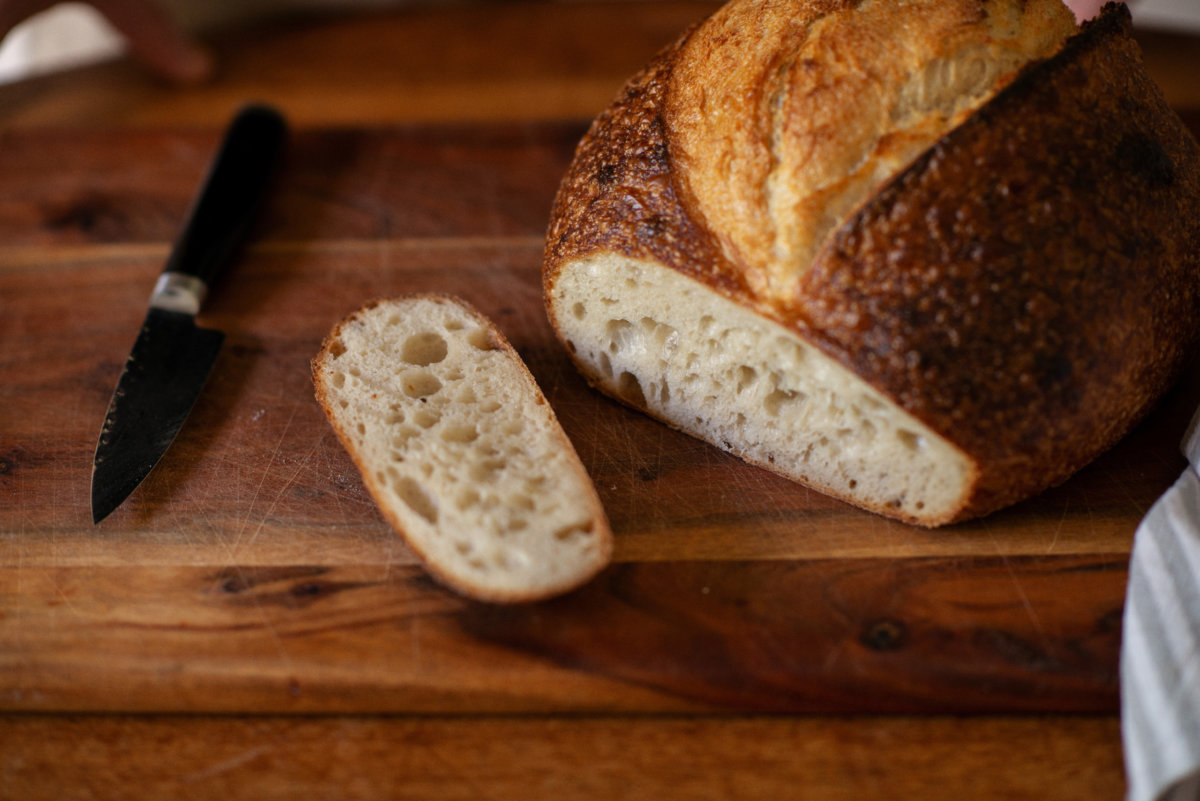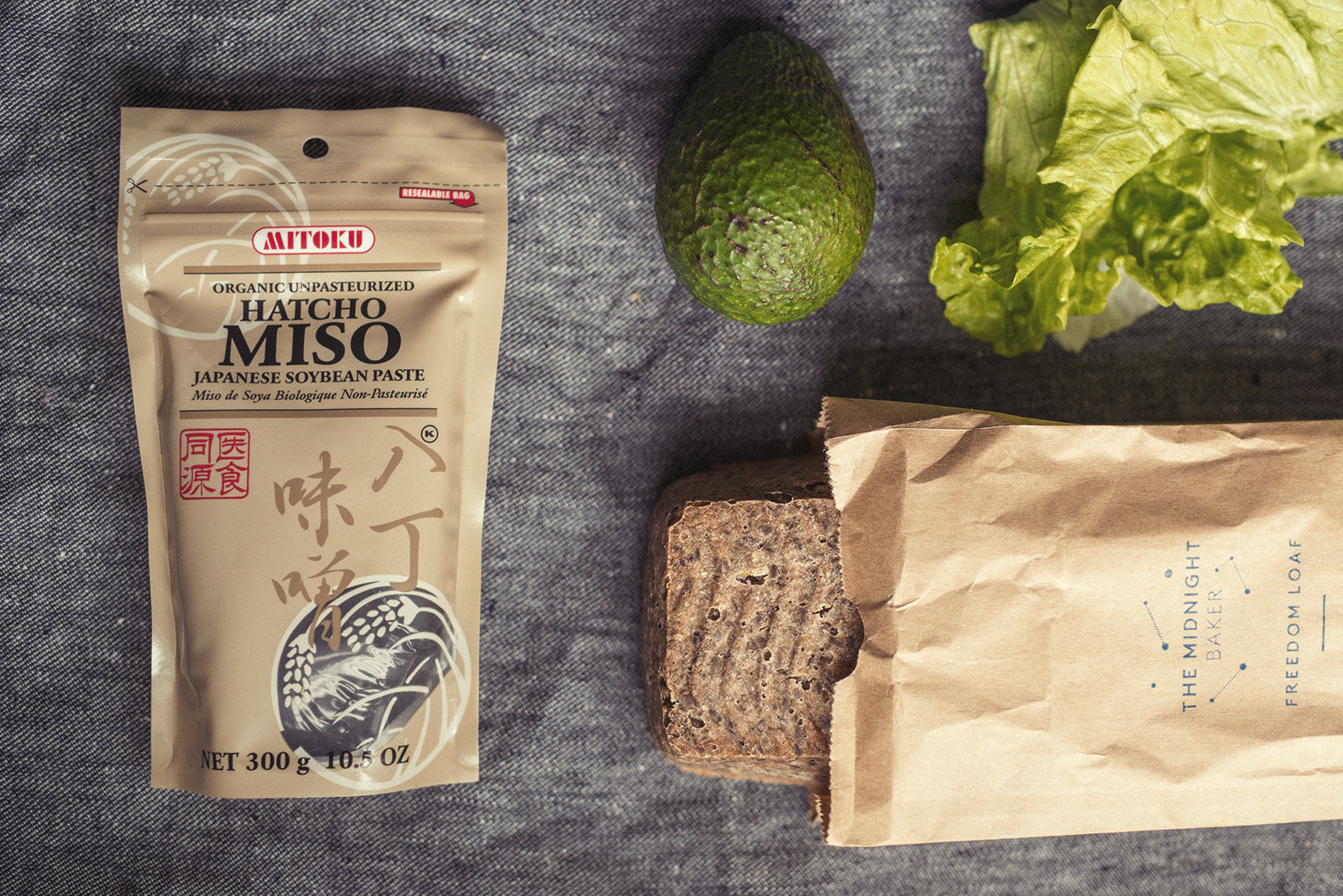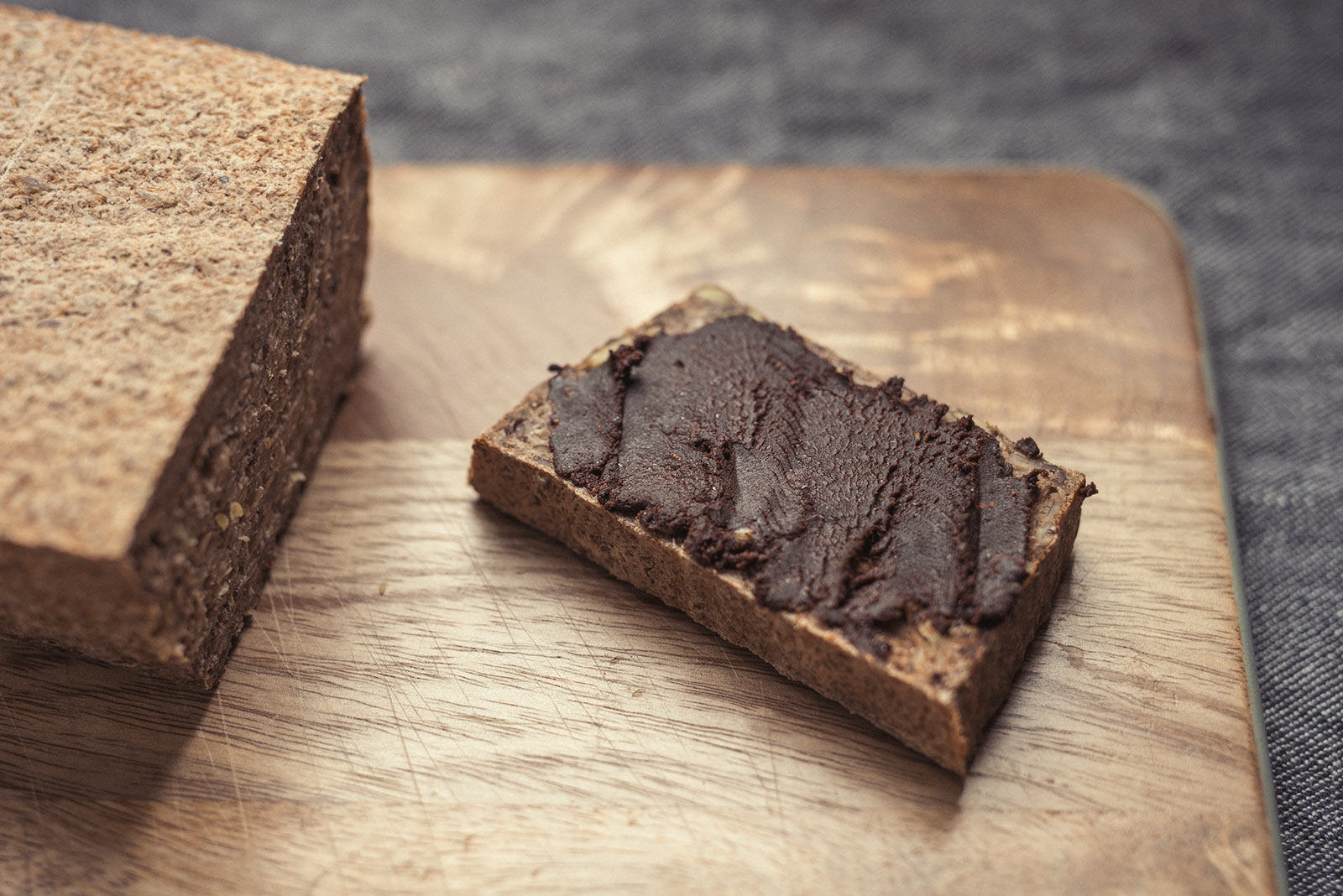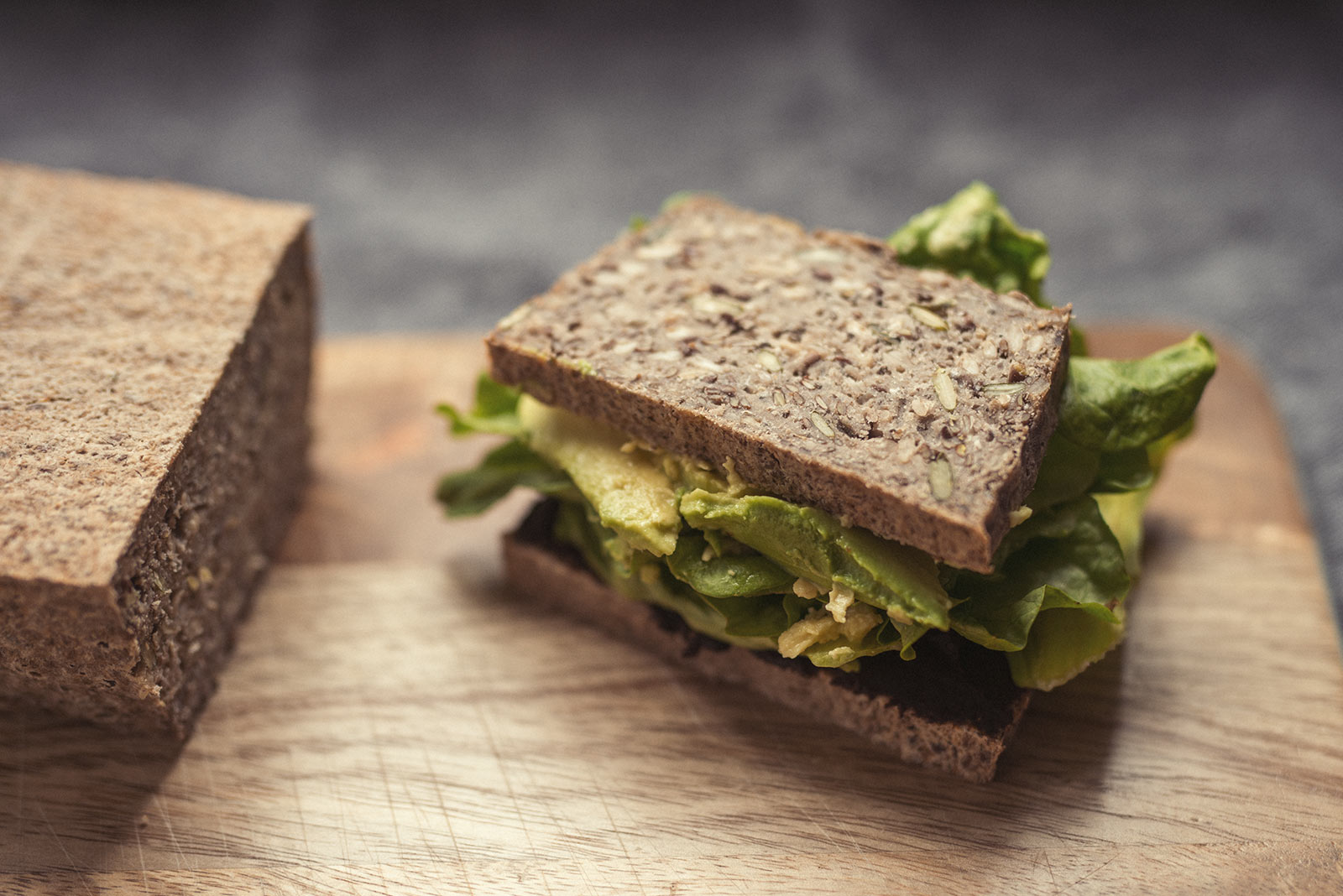
114—
Artisan Sourdough Bread

Hatcho Miso is one of my favourite sandwich spreads.
I reckon it tastes like a ‘healthy’ Vegemite or Marmite. You know what I mean, right? Miso doesn’t contain other crud like refined salt, malt extract or sugar, colour (150c), or flavours.
Miso also comes with its own nutrients — nothing has to be added to it. Vegemite + Marmite have vitamins + minerals such as B1, B2, B3, folate, B12, and iron added to their spreads.
Note: I’ll never understand why you would have to add B Vitamins to a yeast spread? Isn’t that what yeast is good for?
Having Hatcho Miso on your ‘sammies’ is also a good way to have protein for lunch without having to eat animal products such as meat, chicken, egg or cheese. I like to apply a thick spread of this to a seedy bread to top-up the protein content of my sandwich.
Note: Applying Miso to your child’s toast, instead of Vegemite or Marmite, is a good way to get protein into them in the morning. Or, you could try using savoury yeast instead of these spreads – for its ‘real’ B vitamin content.
It’s great to be able to enjoy an Antipodean favourite but with a taste of Japan and the added benefit of protein.
But there’s more — because I use the Mitoku brand, which is organic + fermented + unpasteurised, this product also helps promote your good belly bacteria.
Goodness. Gracious. Glee!


While you might think that this sandwich sounds like ‘simple stuff’ it has been carefully crafted to cover-off three very important elements of eating:
1— It fills you up.
2— It provides great nutrition.
3— And, it tastes ‘real good’.
I use Freedom Loaf (the Buckwheat variety)1. This loaf consists of 4g of protein per 40g slice of bread. The reason it is so high in protein is because it contains buckwheat + seeds (sunflower, linseed, pumpkin, and chia).
I then add a thick spread of Hatcho miso. It has 4g of protein per Tbsp (17g) — which is around a snack sized amount of protein.
Note: Other places you might use this soybean paste: soups, stews, sauces, marinades, dips, dressings + stir-fries.
Freedom Loaf consists primarily of seeds — which provide good fat.
I then add approx. 1/4 of an avocado. (More good fat!)
Finally, I pile my sammy high with either sheets of dark green iceberg lettuce leaves, or I use endive or cos lettuce.
To find out why ‘Iceberg’ is one of my favourite lettuce types, please read this previous post I wrote about it.
Note: Instead of using lettuce you might like to add Broccoli Sprouts. Or, you might like to ‘go crazy’ and use both.
You don’t have to have meat, dairy or egg on your sandwich to fill you up. You just have to think logically about the construction of it. (Use a nutty bread rather than a grainy bread + get funky with your protein choices.)
I don’t have a problem with my clients eating soy products (especially my vegetarians + vegans).
As long as they are aware of what they are actually eating + how many times they are eating it throughout the week. (Check out my blog-post on how to minimise food intolerance.)
To this end, I recommend the following:
Primarily have fermented varieties of soy
Tempeh + Tamari + Natto + Miso
Note: When soy is fermented it breaks down certain toxins that interfere with the correct functioning of our body.
Choose ‘organic’ if it is a non-fermented soy product
Tofu + soy lecithin + meat substitutes — like soy sausies 😉
Note: Soy Lecithin is hidden in a lot of food products so please take this into account if you’re choosing to eat soy products on a regular basis. You may find this ingredient in many of the products that you consume regularly. These products include cookies + biscuits, chocolate products, breads + bread mixes, wafers + crackers, snack bars, chewing gum, and ice cream.
Eat soy products in moderation
Moderation ideally means only having a serving of soy 3x weekly.
Rotate other protein options
Plant protein options: Lentils + peas + beans + nuts + seeds + quinoa
Animal protein options: Meat + chicken + fish + seafood + dairy + eggs
Note: I recommend that my clients keep away from soy milk + soy yoghurt + soy cheese + soy mayo + soy icecream + soy oil + soy flour. (This includes Textured Vegetable Protein – TVP, which is made from soy flour.) These soy products won’t necessarily be available in organic varieties (non-GMO), and these products definitely aren’t fermented so they’re really not that good for you.
Lisa Fitzgibbon is a degree qualified (2006), experienced and registered Naturopath & Medical Herbalist. She runs her own private practice – OOMPH in Grey Lynn, Auckland, New Zealand.
Lisa has been involved in the Natural Health industry for 16 years. She draws on her professional training and experience, as well as her own personal experience to bring you realistic, holistic health advice.
Book onlineThe Freedom Loaf is made by The Midnight Baker. Its free from egg, refined sugar, dairy, yeast and wheat. It’s not cheap but that’s because it’s hand-made from whole-food ingredients ($15). However, you can slice this baby up and pop it into the freezer.
It contains 19 x 40g serving servings (or slices of bread). This means, if you follow the principle of all things in moderation, you can have three of these sammies per week over the next three weeks. You’ll even have have one piece of Freedom Loaf left-over to make some toast or to make an extra half sandwich should you be particularly hungry on one lunching occasion! 😉
Subscribe to LISA SAID SO
Subscribe to the LSS newsletter to get updates on a very irregular basis.
Sorry for the interruption!
You seem to be interested in what Lisa has to say. To be updated when new articles are published, or we have news to share, enter your email below. Thanks!